
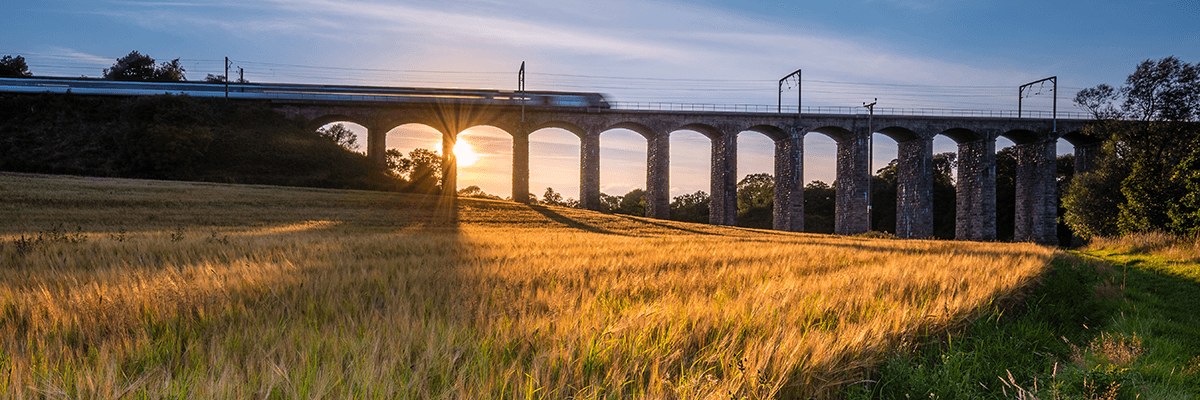
Why We Mean Green
Travelling by train is more than a journey. It’s the greenest form of public transport, and the ready-made solution for a low carbon future where our roads are quieter and safer, and the air we breathe is cleaner.
As Britain emerges from the pandemic, we have a chance to pursue a cleaner, greener recovery. With the UK Government’s legally binding commitment to reduce carbon emissions, we must all play our part to achieve those goals – and so the rail industry is working hard to become even greener.
Put simply, taking the train already helps tackle climate change – it cuts carbon emissions by two thirds compared to traveling by car - and it can do more in future. That’s why we want more people and freight to switch to rail.
.gif)
-

The same amount of carbon used to produce one plastic bottle can take you 2km by train. This means that for the number of plastic bottles the UK uses in a day, you could travel around the world 1,750 times by train!
-

The average Brit spends 3.5hrs on their phone every day. Over the course of a year, that creates carbon emissions higher than a 1,970km train journey – the same as travelling from London to Glasgow 3.5 times.
Going green
-

Saving the equivalent of 400,000 plastic bottles from landfill every month, thanks to free water fountains at stations
-

Creating 80,000+ cycle spaces at over 500 stations
-

Installing more than 200 electric vehicle charging points at stations nationally
-

Saving 1.1km of paper, by reducing the number of journeys made with paper tickets by 13.3m since 2019
-
 Reducing waste, installing solar panels and supporting local wildlife as part of the industry’s sustainable stations pledge
Reducing waste, installing solar panels and supporting local wildlife as part of the industry’s sustainable stations pledge
Driving greener transport choices
Simplifying rail fares

For business and leisure passengers, fares reform could make up to 80% of ‘walk up’ off-peak long-distance tickets cheaper and give greater flexibility to mix-and-match different types of ticket. Analysis conducted by KPMG before the pandemic suggests this reform would encourage 300 million more journeys across Britain and cut a staggering 1.2 million tonnes of CO2 emissions over 10 years.
Making polluters pay
Train companies are also pushing government to adopt a ‘polluter pays’ approach to transport taxes. At present in the UK, there is zero duty on fuel for planes but taxes make up 40% of the cost of electricity to power trains. If the government is serious about decarbonising transport, we hope to see this change.
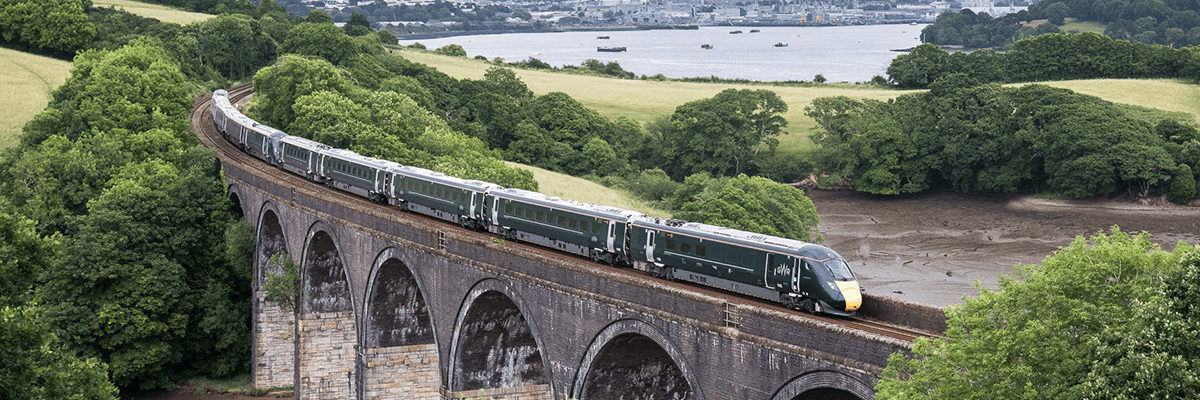
While aviation has an important role to play in connecting places where rail or other types of transport aren’t a realistic option, trains are the greenest way to get large numbers of people from A to B. Government should take steps to make rail travel a better option for people than air where trains are a viable choice, not make taking the plane cheaper, as is being proposed with the cut to domestic air passenger duty.
High Speed connections
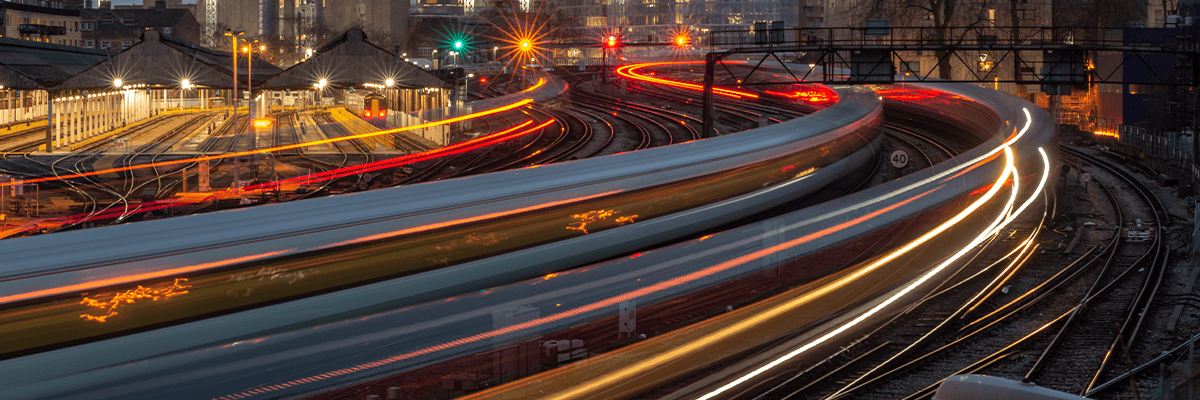
One way of making train travel a more attractive choice is to encourage more people to travel by high-speed rail. HS1 was the UK’s first high-speed rail line and the first railway to run entirely on renewable electricity. This is the line used by Eurostar trains to the continent and some Southeastern services to Kent, removing 60,000 flights from the skies, and 6,000 cars and lorries from the roads every year.
HS2 – once up and running – will stop at over 25 stations, connecting 30 million people from Scotland to the South East, while also making millions of other journeys faster by connecting up with the existing network.
High speed rail emits seven times less carbon than the equivalent car journey when passengers begin travelling on HS2, they will be emitting 17 times less carbon than if they were to take a domestic flight.

Extending the high-speed line and moving inter-city services onto their own set of tracks will also free up space on the existing rail network to run more local, regional and freight trains. This will help to reduce emissions from road transport, reduce congestion and improve the quality of the air we breathe.
How we build is just as important as what we build and HS2 is cutting the carbon footprint of construction by 50% and creating a new Green Corridor running alongside the railway, leaving behind 30% more wildlife habitat than exists currently and planting 7 million trees and shrubs.
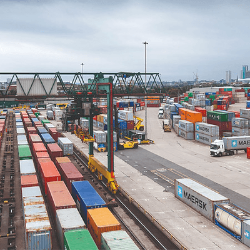
Electrifying the railway

Fully decarbonising the UK railway network by 2050 will require further electrification of existing tracks.
Currently, only 42% of the UK rail network is electrified, although 70% of trains run on electrified tracks. In order to meet the Government’s net zero target up to 13,000km of track will need electrification.
Electrification has a range of benefits:
- It’s significantly better for the environment – electric trains emit 60% less carbon than diesel trains, potentially rising to 80% by 2040
- Electric routes produce less air pollution than diesel alternatives
- Electric trains are quieter, reducing noise and vibration for passengers and those living and working near the tracks
- In the long term, electric trains cost less when compared to the whole-life costs of diesel engines
- Electrification can reduce journey times due to better acceleration which contributes towards a railway that is not only greener, but faster too
- Electric trains are simpler, more reliable and easier to maintain than diesel trains, meaning fewer delays
Crucially, electrification is the only technology available to decarbonise the faster, intensively used passenger routes. Freight routes also benefit from electrification but where this isn’t feasible, new hybrid Stadler locomotives, due to be introduced in 2023, will provide a green alternative.
In the past, electrification of the railways has been very stop-start. This drives up costs and hampers the industry’s ability to deliver. With a rolling programme of electrification instead, the UK can decarbonise its railway network in a more cost-effective way.
Further electrification can’t wait – in order to meet the Government’s net zero target, we need to press ahead at pace, because some of the work that needs to be done will take a long time. Not only that, but the sooner we start, the greater the carbon savings will be – if we can avoid emitting one tonne of carbon per year from 2021, we’ll have avoided 29 tonnes of carbon emissions by 2050.
Battery and hydrogen trains

These technologies will have an important role to play in the run up to 2050, as they will allow carbon to be saved as we wait for electrification to be completed.
There are a number of companies across the UK developing cutting-edge hydrogen and battery passenger trains, harnessing the latest innovation and expertise in these rapidly developing green technologies. These include:
Hydrogen
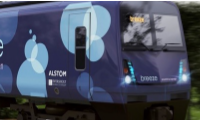
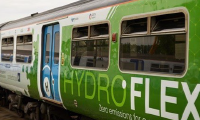
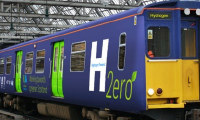
Battery

Hitachi is developing impressive battery technology to be trialled on GWR routes between London and Penzance that could save more than 20% of fuel and help decarbonise rail. The trial will see batteries supplement the existing engines and allow the train to run in and out of stations under battery power alone. Proposals have also been developed to include batteries on their regional trains – like the Class 385 trains that run across Scotland’s Central Belt from Edinburgh to Glasgow – to give them an additional range of up to 100km on battery power alone.


A network resilient to climate change
Attracting more people and businesses to rail will be pivotal for the country’s net zero ambitions. But even if this target is met, the reality is that climate change is already here. That’s why the rail industry is working hard to make the railway more resilient to extreme weather.
2020 was confirmed as one of the top five hottest years on record, and one of the top ten wettest years. More extreme weather conditions impact the ability to run the railway safely and punctually, with weather-related incidents already costing the railway millions of pounds a year.
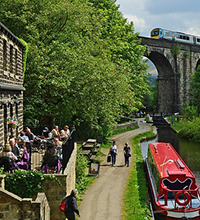
- Heavy rainfall can lead to flooding, stop trains from running, and damage railway infrastructure, causing months of costly repairs and disruption
- Flooding can lead to landslips which typically affect large areas and need significant engineering work to make the railway safe again
- High temperatures cause problems with track and overhead line equipment. In some cases, the repairs after extreme weather events are so extensive that they can take months to complete and cause major disruption to passengers and local communities.
Moving goods, greener

The rail industry is working hard to change this, increasing the amount of freight travelling by train and decreasing the number of lorries on our roads.
- Rail freight plays a major role in the UK economy, each year carrying over £30bn in goods and contributing £2.45bn each year.
- Rail freight also plays a key role in reducing emissions, with every freight train removing 76 lorries from the roads. This means that 1,000 lorries are taken off London’s roads alone every working day.
- Every year, rail freight removes 7 million lorry journeys and saves 1.4 million tonnes of CO2 emissions.
Tesco rail

Tesco was the first UK retailer to start running a dedicated rail service from Spain using temperature-controlled containers. It’s now established five weekly train services from Spain to its Barking depot, carrying 35,000 loads of fresh produce such as oranges and lemons, cucumbers, peppers and tomatoes. This helps to reduce emissions by around 76% compared to lorries – the equivalent of 4,500 tonnes of CO2.
Tesco is now looking to introduce four more rail routes across the UK, including one linking London to Scotland, which will be ready later this year and will use hybrid locomotives, helping customers enjoy fresher food at a lower environmental cost.